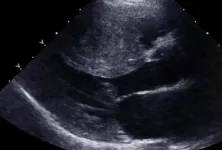Seattle, WASH.—June 4, 2024—The Allen Institute for Cell Science unveiled a set of tools to accelerate research into hypertrophic cardiomyopathy (HCM), the most common genetic heart condition in the world: six new cell line collections, each carrying a different mutation associated with HCM.
HCM is primarily caused by mutations that thicken heart muscle and, in rare cases, lead to heart failure and cardiac arrest. The new cell line collections will help scientists investigate the impact of specific mutations in myosin, a protein that powers heart contractions, on heart function.
The Institute also released cell line collections targeting skeletal muscle disorders, specifically those related to a myosin mutation, and laminopathies, rare diseases caused by mutations in proteins that maintain a cell’s nucleus.
“Providing researchers with these robust tools paves the way for the discovery of new treatments and insights into disease progression,” said Ru Gunawardane, Ph.D., Executive Director of the Allen Institute for Cell Science. “These cell lines are a perfect bridge between our expertise and the efforts of leading scientists to tackle disease.”
Gene-edited tools
The Allen Cell Catalog’s latest offerings are known as human induced pluripotent stem cells. These are skin cells that have been reprogrammed back into their stem cell form. Using CRISPR/Cas9 technology, Allen Institute scientists introduced disease-associated mutations into these cells along with fluorescent tags that illuminate the structures that drive heart contractions. Researchers can use these cells to generate cardiac muscle cells, providing a dynamic model to investigate the intricate biomechanics of heart disease.
Developing the HCM tools offered an opportunity to try a new technique: altering single base pairs of DNA. The combination of these gene editing methods enabled Allen Institute scientists to rapidly create a series of disease-specific cell lines, said Brock Roberts, Ph.D., a scientist at the Allen Institute. “This is the beginning of a different era in human health, where the scalpels and implements of surgery have become molecular,” he said. “We’re still quite a ways from regularly doing that in patients, but this was an exciting opportunity to get into the early stages of research in a human cell.”
Partnering in the lab to make progress in the clinic
Today’s release of the HCM cell lines stems from a collaboration among scientists at the University of Washington; Stanford; and the University of California, Santa Barbara. Their goal was to explore why mutations linked to HCM cause varying symptoms in patients: some display few or no symptoms, while others, even within the same family, suffer from severe illness. The team turned to the Allen Institute for Cell Science, which leveraged their decade of experience making gene-edited stem cell lines to generate a robust suite of cells that could be used for this sensitive research.
"Working with the Allen Institute for Cell Science, we knew we were getting high-quality stem cells,” said Stanford University’s Daniel Bernstein, M.D., “If we did this on our own, it would have taken us several years and would have been extraordinarily expensive, and it would have eaten up a large part of the budget of the grant we had gotten from the NIH.”
The cell lines serve as a platform to study myosin mutations across molecular, cellular, and tissue levels, offering a comprehensive understanding of their impact on heart function. The researchers’ first study confirmed that a specific rare mutation causes abnormal heart function at all biological levels, countering prior skepticism about its clinical significance. "Being able to study this in the dish was really important because some cardiologists were beginning to doubt whether this mutation really caused the disease,” said Bernstein, the senior author on the study.
The cells lines also provide opportunities to observe how the disease develops over time, potentially revealing critical phases where targeted interventions might alter or halt its progression. “Most of the studies we do in human tissue are at the end stage of disease,” said Michael Regnier, Ph.D., a professor of bioengineering at the University of Washington involved with the study. “But what we really want to know is: how is the disease initiated, and how does it progress over time? These cell lines let us do that.”
‘An invaluable resource’
Today’s releases introduces the first disease-specific cell lines in the Allen Cell Catalog, with hopefully more to come, said Jacqueline Smith, M.S., a senior research associate. “As an institute, we’ve been really focused on how normal cells function,” Smith said. “Now we’re exploring them in a diseased state to deepen our understanding of these genetic conditions and hopefully lead to new treatments.”
“Studies of cardiomyocytes derived from the Allen Institute for Cell Science’s cell lines enable us to understand how those molecular changes manifest at the sarcomeric and cellular levels,” said Kathleen Ruppel, M.D., Ph.D., a pediatric cardiologist and investigator at Stanford University. “These lines are an invaluable resource to the cardiac muscle community and will lead to important insights into hypertrophic cardiomyopathy.”
About the Allen Institute
The Allen Institute is an independent, 501(c)(3) nonprofit research organization founded by philanthropist and visionary, the late Paul G. Allen. The Allen Institute is dedicated to answering some of the biggest questions in bioscience and accelerating research worldwide. The Institute is a recognized leader in large-scale research with a commitment to an open science model. Its research institutes and programs include the Allen Institute for Brain Science, launched in 2003; the Allen Institute for Cell Science, launched in 2014; the Allen Institute for Immunology, launched in 2018; and the Allen Institute for Neural Dynamics, launched in 2021. In 2016, the Allen Institute expanded its reach with the launch of The Paul G. Allen Frontiers Group, which identifies pioneers with new ideas to expand the boundaries of knowledge and make the world better. For more information, visit alleninstitute.org.
# # #
Media Contact
Peter Kim, Sr. Manager, Communications and Media Relations
206-605-9884 | peter.kim@alleninstitute.org
END







